
I have worked in primary and secondary schools, further education colleges, overseas colleges & universities and at three UK universities. So much of the identity of all those institutions was not only woven into the fabric of the buildings but, in many ways, defined and moulded by the spaces themselves. As an alumnus of Thames Poly (aka University of Greenwich, my former employer), I experienced a rough round the edges, radical, class-conscious undergraduate degree that oozed 60s idealism from the concrete 60s edifice that was plonked awkwardly on a bunch of shops in Woolwich in South East London (this wasn’t in the 60s by the way; I’m not that old). That block is now flats and, with the change in name, the poly has become a uni and has moved the largest part of its operation to the Old Royal Naval College in Greenwich. How much of its current identity is wrapped in the huge selling point that is those buildings? How much of that cultural capital seeps into the subconscious of the staff and students as well as into the conscious marketing, framing and ongoing aspirations? Frankly, the place I studied at and the place I used to work at couldn’t be more alien to one another.
I have seen new buildings or radical re-fits from a ‘college without walls’ (disaster!) to a construction hub that was almost all atrium along with its too small triangular classrooms. When I moved to UCL I loved the post lockdown opportunities to visit many of its Bloomsbury buildings: the old, the repurposed and the refurbished. Many of the spaces are locked into pre 20th century architecture or, like the IoE buildings, echoic of late 60s/ early 70s modernist design (and protest!). Limitations on space and light in particular are ‘themes’ so I was delighted to be able, with a dozen or so colleagues, visit the Marshgate building of the new UCL East campus yesterday. Due to open in September 2023 it is paired with the One Poole Street building which is both study and living space (this one opens in September ’22). On the site of the Olympic Park and a stone’s throw from West Ham United’s new stadium (you can’t have everything I guess), the broader site is welcoming, feels quite safe and is very accessible by public transport and bike.
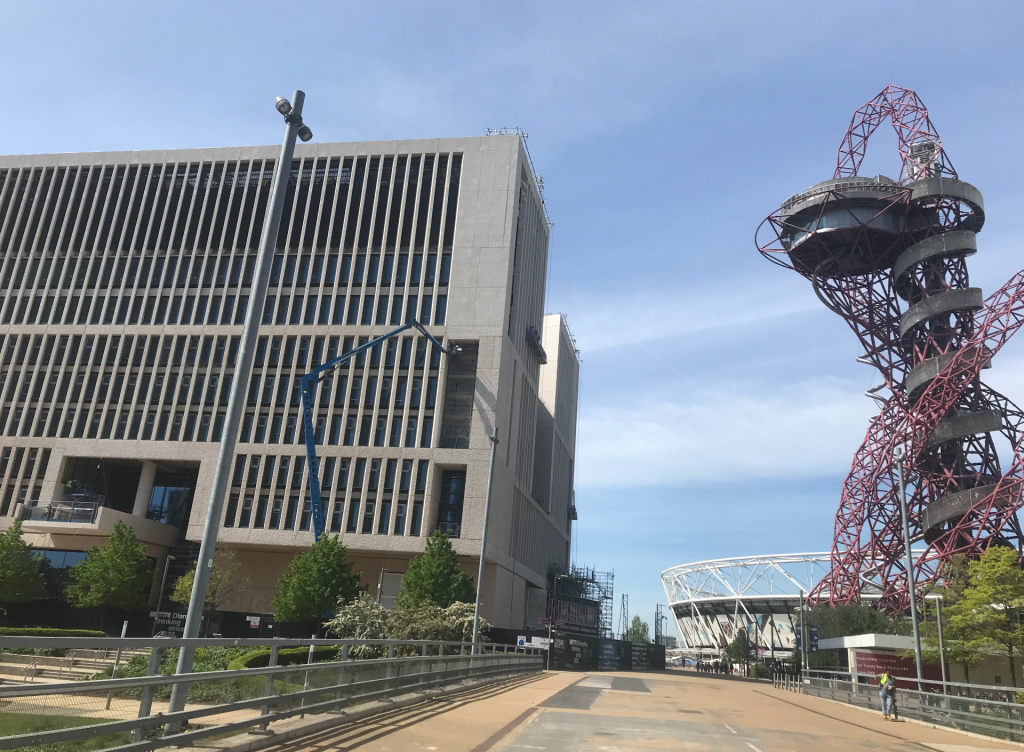
UCL East Marshgate building with West Ham stadium and ‘Mittel Orbit’
The UCL site has all the accurate information you could want about location, development, opening and maps by the way, so I won’t bother repeating any of it here!
Our tour didn’t include an inside visit to the ‘One Poole Street’ building as it is very close to completion and will be used from September this year. The twin block is multiple stories of student accommodation atop teaching spaces which include a cinema that it is hoped will also be a community venue. The landscaping, shifting of bus stops (108 route) and general polishing were very much in evidence. At least one of us was heard to say: “I’d like to live here!”
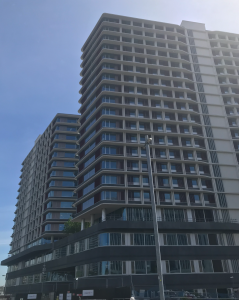
One Poole Street building (formerly known as Poole Street West)
Our tour was led by Helen Fisher who is the UCL East operations lead and we were accompanied by the UCL East Director, Professor Paola Lettieri, as well as representatives from the building contractors. Three of my colleagues from Arena were there and, after a ‘short’ delay while one of our sub-party was found some trousers, we trudged to the entrance in our hard hats, boots and protective gloves.
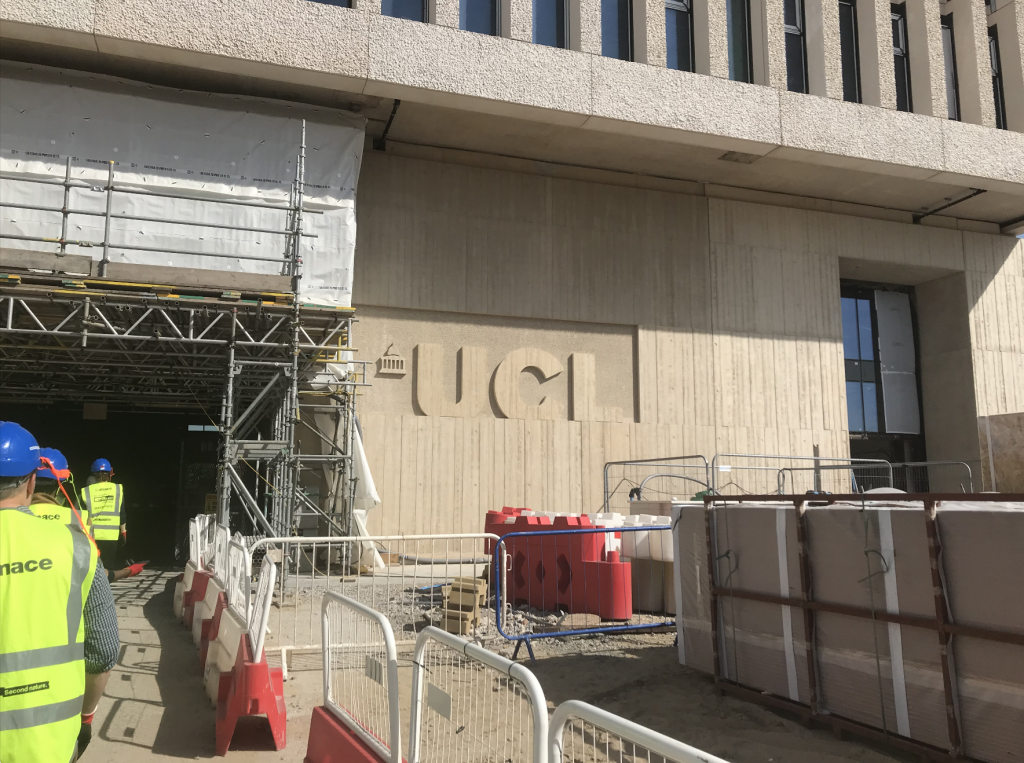
Entrance to Marshgate building showing UCL logo in relief
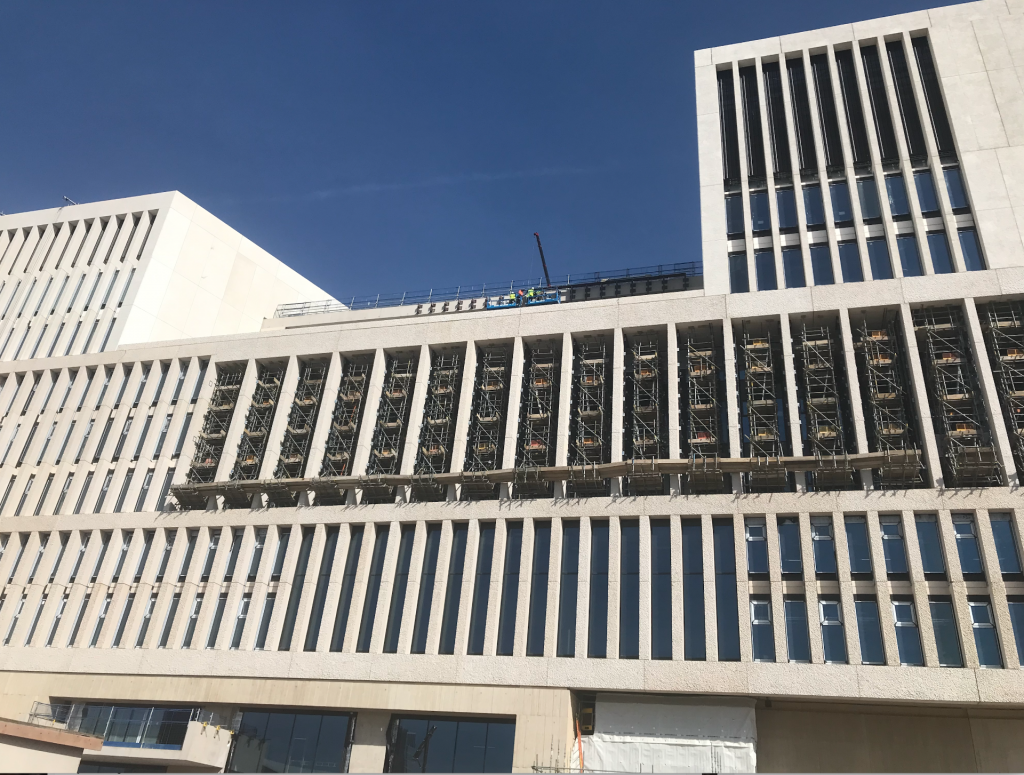
‘Front’ view of Marshgate though over time this may not be the main entrance
Whilst it’s quite hard to visualise how some of the spaces will look, being there really helped me to appreciate the scale and the vision. The thing that I kept coming back to as I listened to Helen and others enthuse about the realisation of the spaces is how much working cultures could be defined by the way the building (and the wider environs) are shaping up. The thought that has gone into the teaching spaces, the design and centrality of inter-disciplinary spaces, the community-focussed spaces and possible activities, the value placed on wellbeing & access and the importance of communal space, light and views for both staff and students all permeated the framing of the tour and the conversations within the group. While debates rage in the wider world about the various pros and cons of working from home and returning to offices, I couldn’t help thinking: ‘This place would pull me in of a morning”.
A trip up in the goods lift (some might say appropriately enough) saw us to our first stop on the 7th floor and the communal space. The light from the windows coming in on the left in the picture below will be supplemented by the central pool of light from the glass-not-glass roof in the central section which will supply light within the whole building. It was shame this was still covered as it will likely change the look and feel incredibly. The glass panes in the widows are designed in such a way as to prevent the summer sauna/ winter freezer effect of other buildings many of us are familiar with.
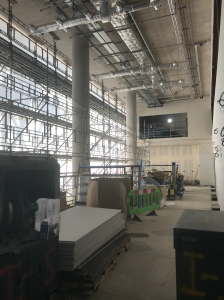
7th Floor staff communal space- the wall of windows sit in the void at the top of the building that can be seen in the image above
On the 6th floor we walked through shared lab spaces and looked at some teaching rooms. Space and light define the lab, office and communal spaces while the classrooms pull light from the ‘core’.
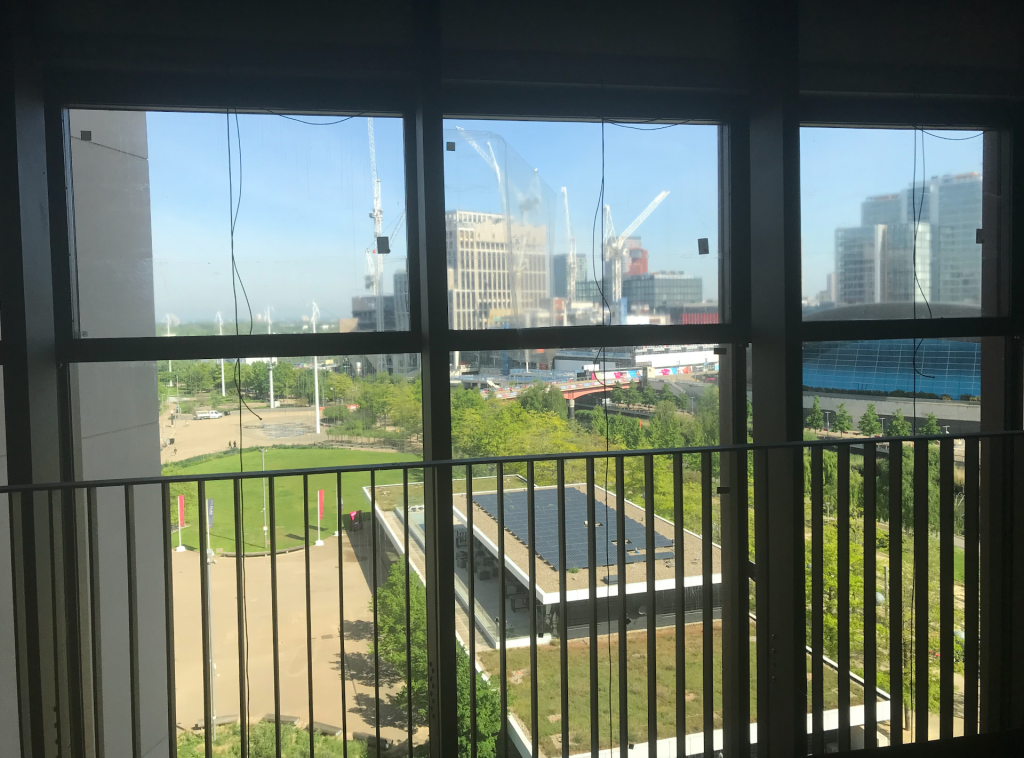
View from a shared lab (I think!)
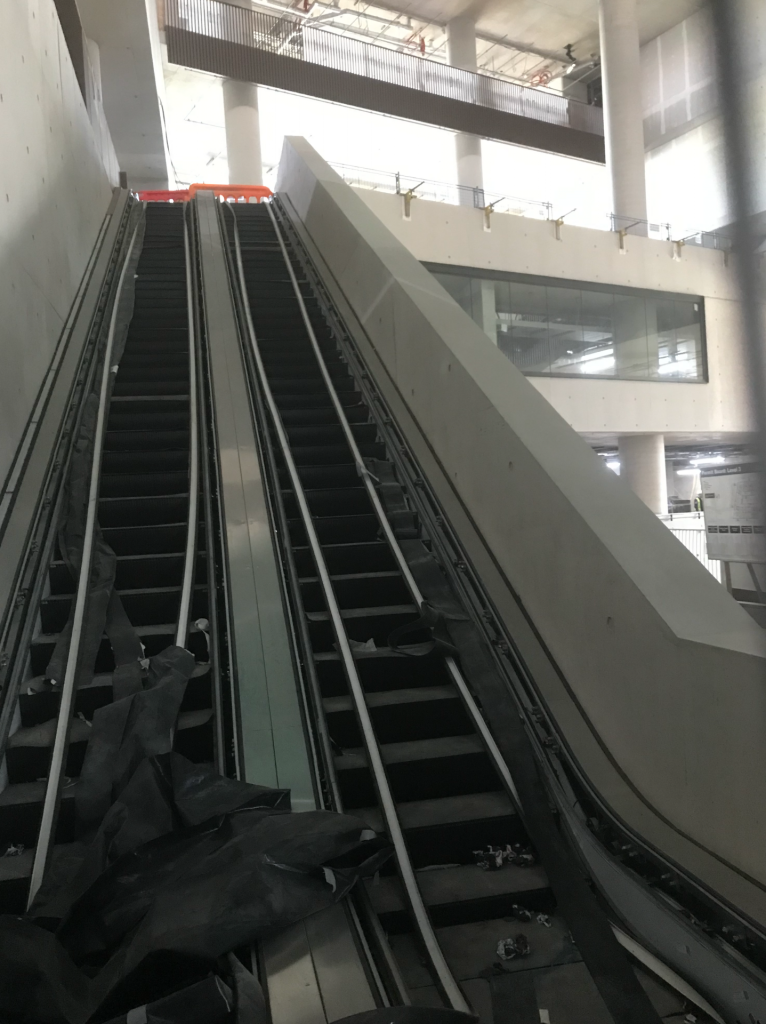
Escalators that will take staff and students from the ground to the second floor. Another set will enable swift movement from 2nd to 4th.
As I understood it, along with stairs there are lifts (and toilets) in each corner of the building but swift access to the student communal spaces and library are facilitated by the floor skipping escalator system. One thing I very much liked was the ‘picture window’ below. Apparently, this is designed in such a way that it can be opened as a bridge to other builds as and when they are completed.
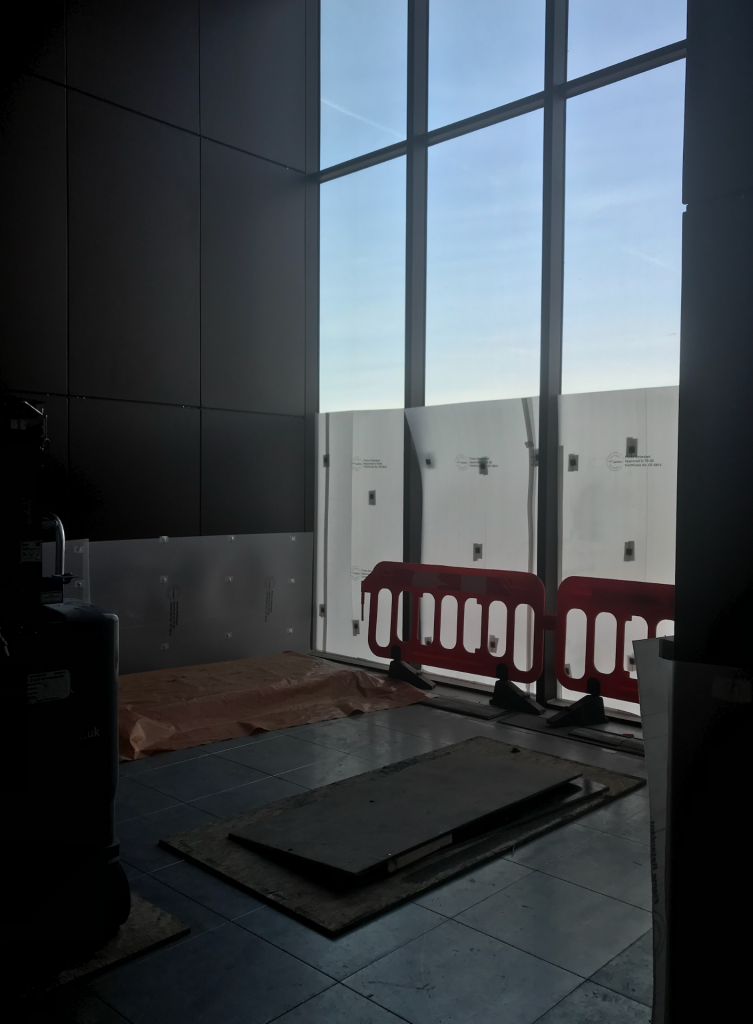
Picture window at far end of the library and study spaces
We saw standard classrooms, a sort of ‘executive’ conference venue and audio-visual creator spaces as well as spaces for film that had some colleagues drooling! We didn’t see the object-based learning spaces or the in-situ ‘museum’ space but, as a former history teacher, knowing these will be a feature of a planned, authentic pedagogic approach is very exciting. The large lecture hall with seating designed for whole and small group activity will I hope contribute towards shifts away from over use of the uni-directional, ‘classic’ lecturing style.

Large lecture hall
As we worked our way down the building we eventually arrived at the main hall. This will have public spaces, commissioned art work and will double as a gallery space. I wondered as we went round how the spaces will settle on the names that become common. No doubt the architects and the UCL East staff will strongly influence things but I wonder if the things like the often-heard ‘the Mez’ will be well-established or if, as staff and students arrive, new names will emerge.
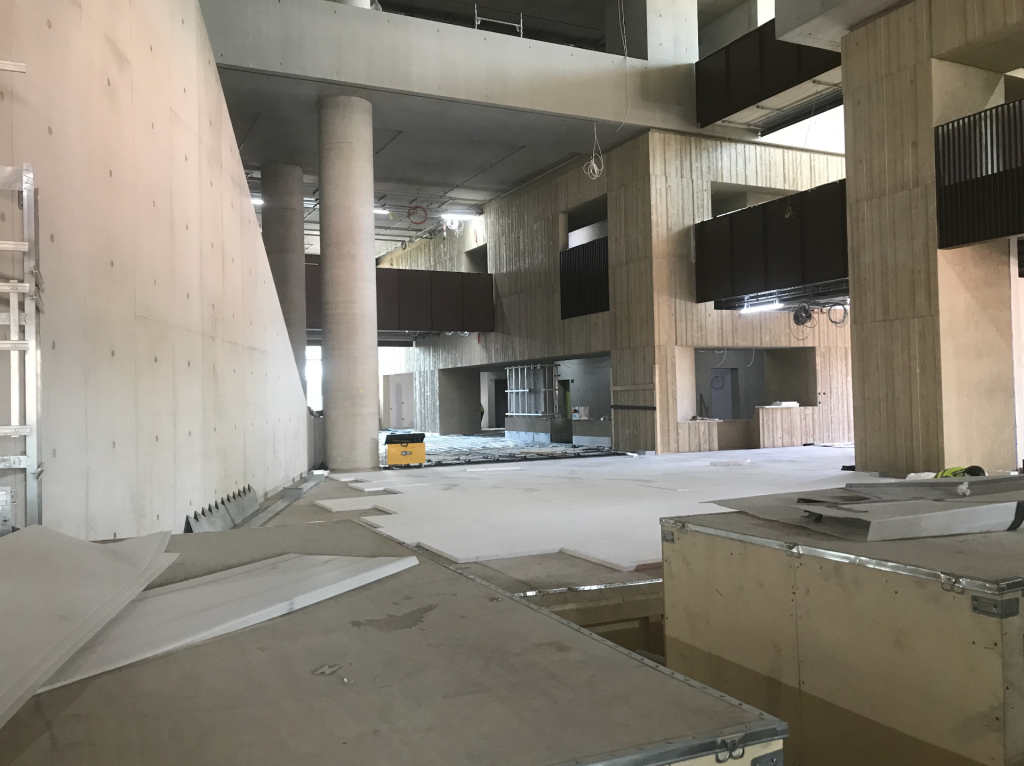
Entrance hall (currently being fitted with underfloor heating)
We rounded our visit off with a walk around the Olympic park, the cultural district of which is being branded as the ‘East Bank’ . The morning was completed with lunch in the sun with colleagues at ‘The Breakfast Club’ in ‘Here East’ which I only recently discovered has been a UCL presence in Stratford for some time. Maybe it was the sun, the lunch and/ or spending more relaxed time with colleagues but I came away feeling very positive about UCL East. The possibilities are definitely there.